I’ve got something special for you today! Are you sitting down? Today, I’m sharing colored and coded Sight Word Orthographic Mapping Cards with you! In other words, I’m sharing the “answers” to our blank mapping {OM} cards.
After sharing the blackline Orthographic Mapping Sight Word Cards a couple of weeks, I got an overwhelming request from readers for the “answers.” {I’m using that word in quotes because I do not believe there is only one correct way to code, especially with certain sight words considering different English dialects.}
Be sure to read more about mapping sight words in our post, Orthographic Mapping with Sight Words {How to}.

This pack is for subscribers only!
Not a subscriber? Subscribe HERE.
If you are already a newsletter subscriber, hop over to my subscriber freebie page and enter the password, which can always be found at the bottom of your most current newsletter.
Sight Word Orthographic Mapping Color Cards
All 150 sight words have been colored and partially coded for you. Of course, you may disagree on some of my colors or codes, and that’s perfectly okay. That’s why I offered the blank ones – so you can create your own. If anything, I hope they’ll be a springboard for you as you teach sight words to your learners.
Here’s the breakdown of what the colors and codes mean and a few examples so you can see what’s in this FREE pack.
Color Key:
Light Blue Background = All the letters in the word make their expected sounds. For example, all the letters of it and he make their expected sound for where they are found in the word. The i in it makes its short sound because it’s in a closed syllable. The e in he makes its long sound because it is an open syllable.
Note: Sometimes, you’ll see a pronunciation mentioned on a card with a blue background if it has a letters with an ambiguous pronunciation. Examples: final y, oo, and ow.
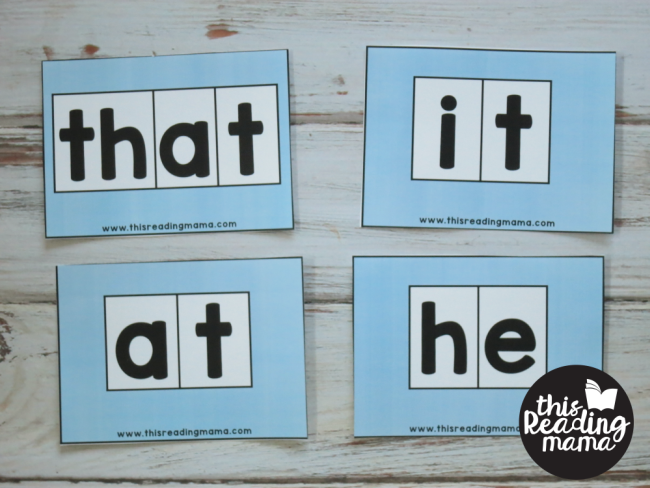
For example, all the letters of that, it, at, and he make their expected sounds in the words. The boxes remain white for the letters that follow phonics rules.
Orange/Yellow Background = Words that have letters (or letter chunks) that make a lesser-known or an unexpected sound. For example, the a in was makes an unexpected sound while the s makes its lesser-known sound, /z/. The boxes for the letters on these cards are orange, warning learners that their sound is different.
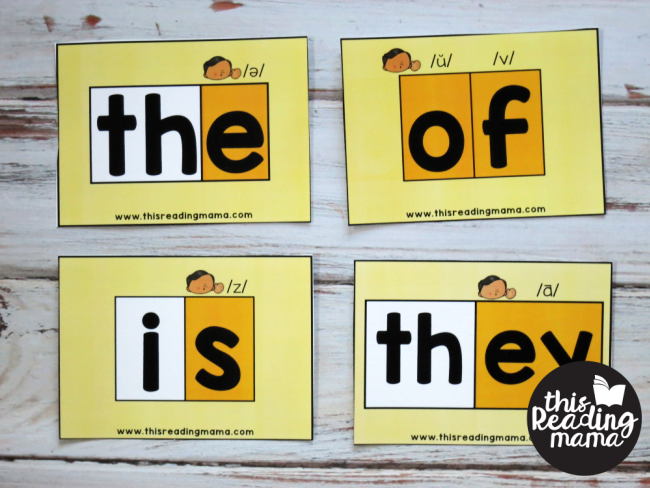
For example, the word of does not have any expected sounds for either letter. The s in is makes a lesser-known sound of /z/.
Above each lesser-known or unexpected letter sound, the sound the letter(s) make is written above like this:
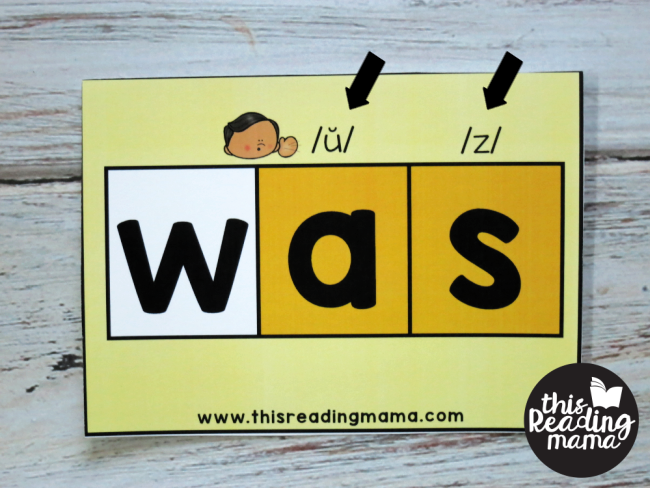
Box Key:
Letter combinations such as vowel digraphs, consonant digraphs, trigraphs (like igh), and bossy r vowels are boxed together to show that they go together.
Coding Key:
A few coding marks have been included on the cards. For example, silent letters are crossed out, like the silent e in time or the silent w in who. Other coding cues include red boxes around suffixes and a dark blue line in between syllables. More info is included about the color and coding key on page two of the free file.
Grab these Sight Word Orthographic Mapping Cards!
Not a subscriber? Be sure to snag these FREE cards by entering your email below.
Already a subscriber? Login HERE using the most current password.
Enjoy teaching!
~Becky
You’ll Also Like
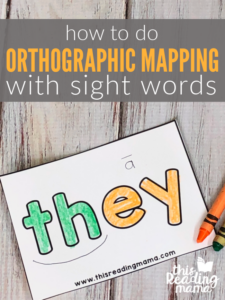
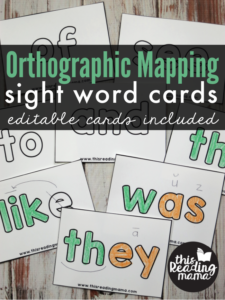
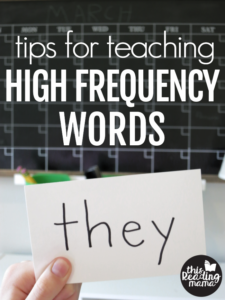
These cards are amazing! Thank you so much!
Hi Becky,
I’m using the blank OM cards with my second graders. I just started and was using the green and red “answer key” that now links here. Do you have that file still available? I love having the students color them, but I found I need a little help with the coding. It is helping them already!
Thanks!
I had to change my cards because someone owned the copyright on color coding the cards using green, yellow, and red.
These color coded orthographic mapping sight words absolutely helped a group of students I worked with last year. I cannot thank you enough for sharing this amazing resource. Our school has decided to use the comprehensive Orton Gillingham scope and sequence this school year and some of the words I need to teach are not covered in your set. Is there anyway I could give you the list of words I need and have you input them into this orthographic color coded set for my use? I am willing to pay you.